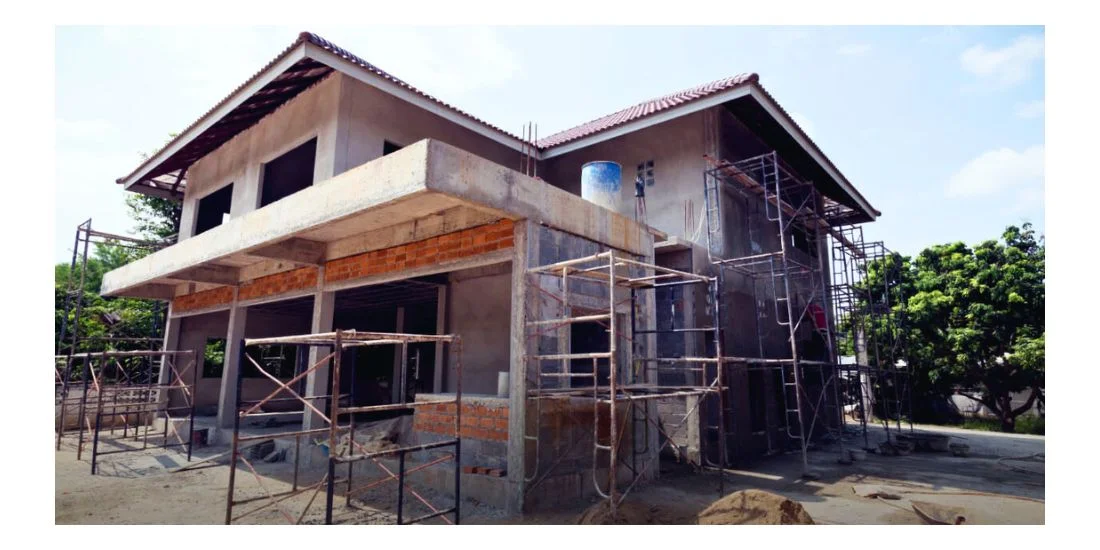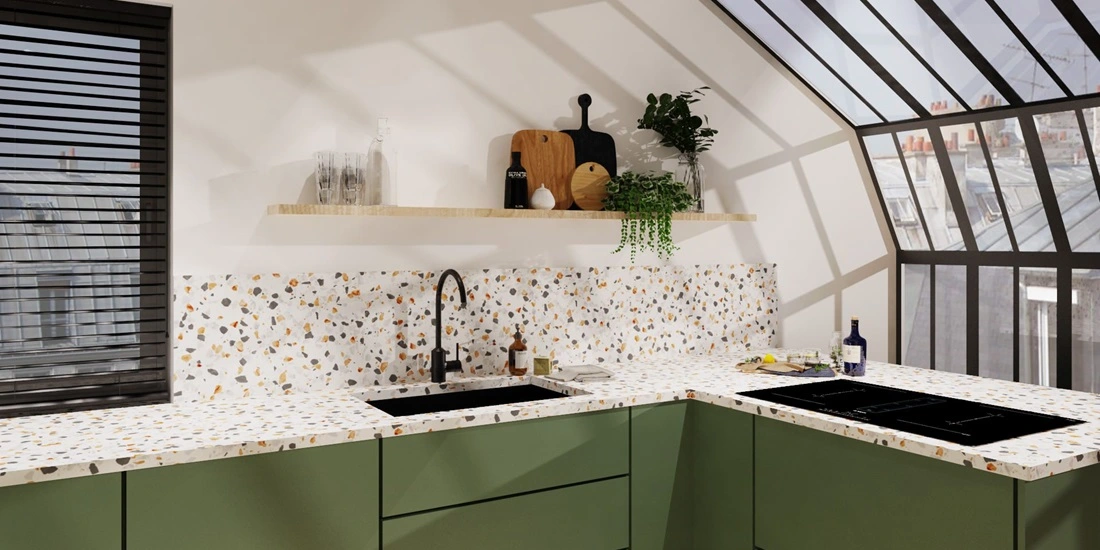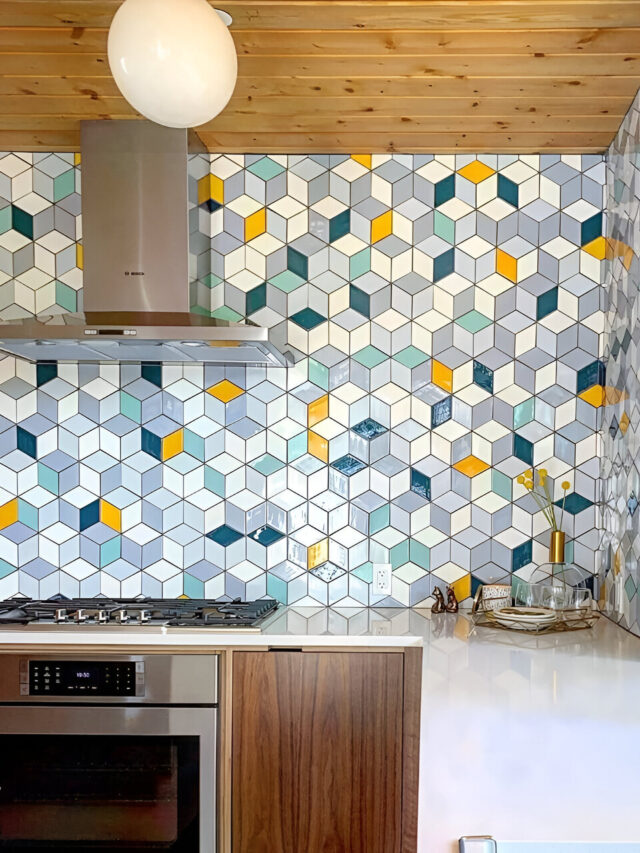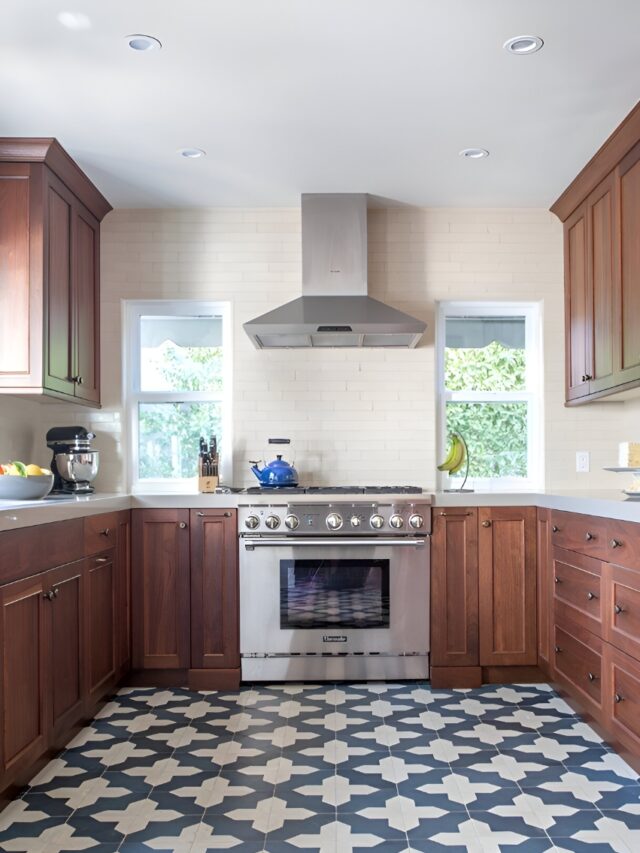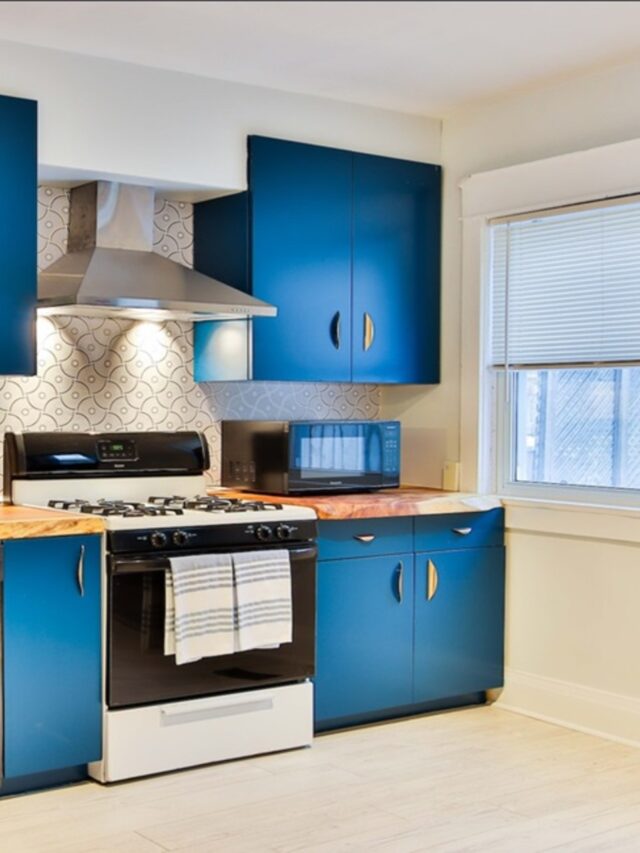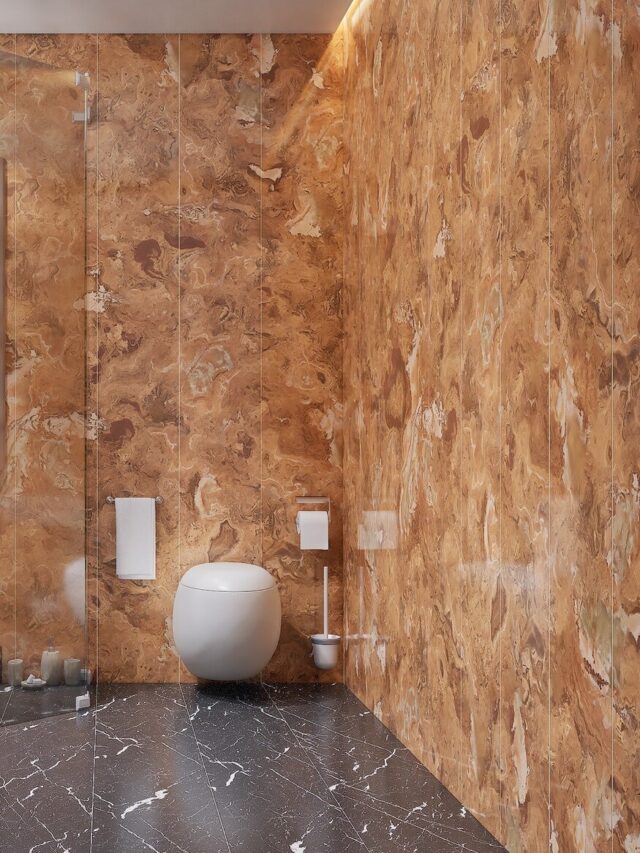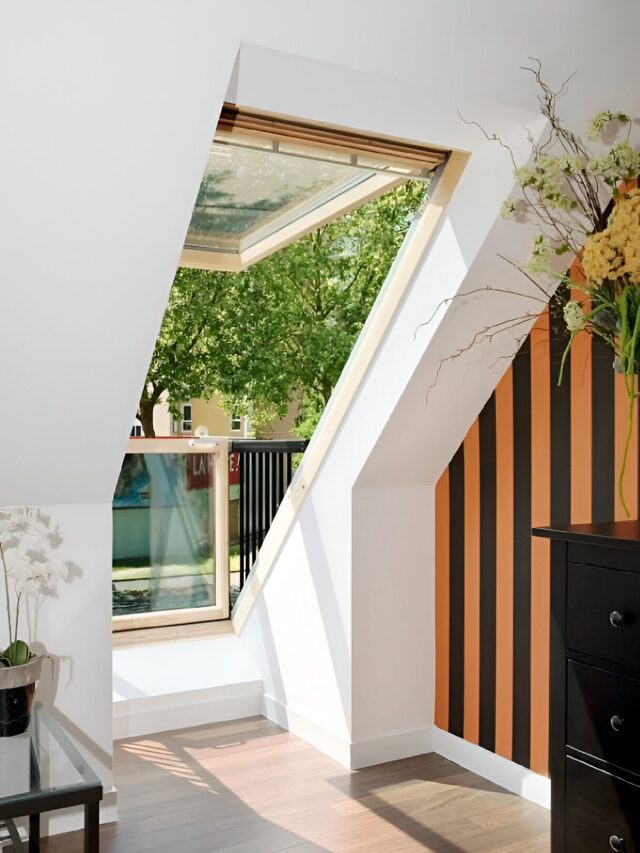Table of Contents
It is one of the most significant decisions you will make in your lifetime to build your home. It is a haven of safety for you. So, you must understand the steps of house plan design at each stage.
To ensure a successful project, you should understand the basics of home construction. Making the right construction materials selection and avoiding costly mistakes is easy with proper house planning.
In this article, you will find all the critical steps of designing a house plan quickly and efficiently.
How To Construct A House Step-By-Step In India
In this article, Alacritys will provide you with a simplified way to understand the process of house construction in India. To simplify things, we have divided the entire construction process into two phases:
- Pre-construction phase
- Construction phase
Let’s look at each one of these stages of home construction closely.
Pre-construction Phase
There are 5 phases to the pre-construction phase – this includes the Land Acquisition, Designing a House Plan, Budget Estimation, Documentation, and Approval from the Government. Here, we examine each in more detail.
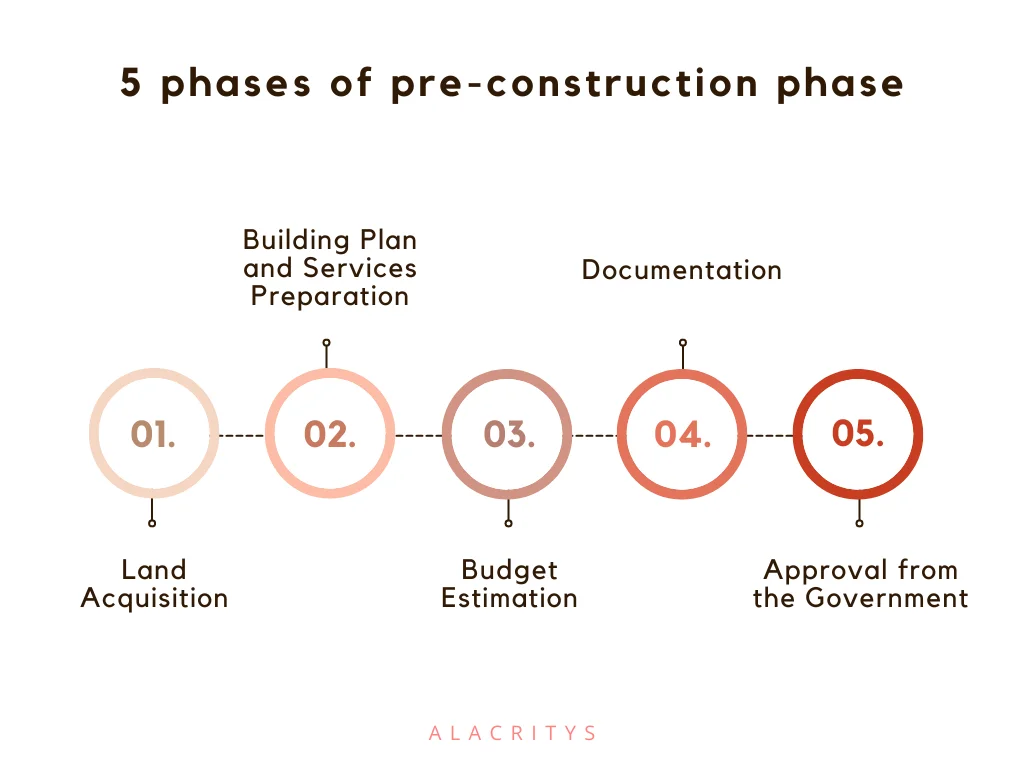
1. Land Acquisition
- Acquiring suitable land is also an important component of the new house construction process.
- To accomplish this, you need to consider many variables, such as the location of the house, the size of the house, the sizes of each room you require, the number of floors of the building, the marginal spaces, the parking area, the landscape area, the number of bedrooms needed, the number of toilets, the foyer area, etc.
- For instance, the construction of a house in the city center is a much more expensive venture as compared to home construction in the outskirts, so you can line your requirements with the budget you have.
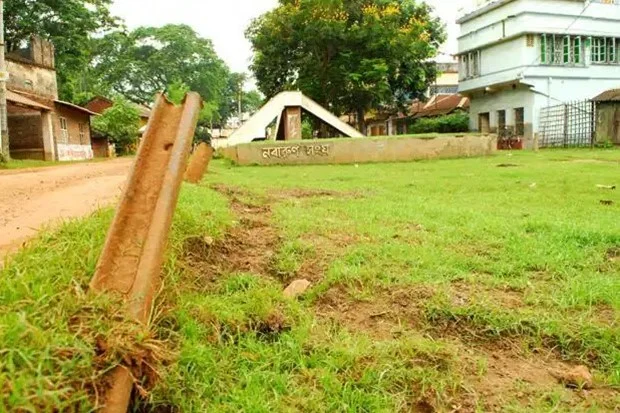
2. Building Plan and Services Preparation
- The most important part of the house construction process is having a detailed house plan design. This is true, especially for big projects like constructing a house from scratch.
- You need to plan out the entire space carefully.
- A plan for building a home helps you to divide the space into smaller parts and plan for the various features.
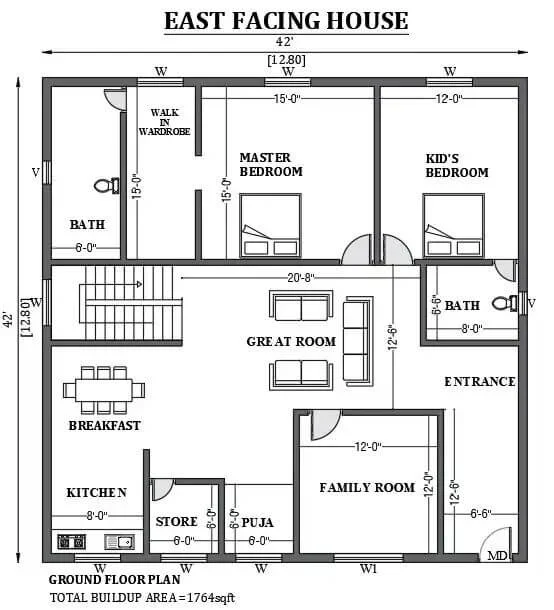
- Once you freeze the plan, ask your architect to furbish certain related service drawings like all elevation drawings, RCC drawings, staircase detail drawings, doors-windows drawings, all sectional drawings, electrical drawings, plumbing drawings, gas pipeline drawings, AC drawings, flooring drawings, and bathroom tiles drawings.
Reference Electrical Drawing –
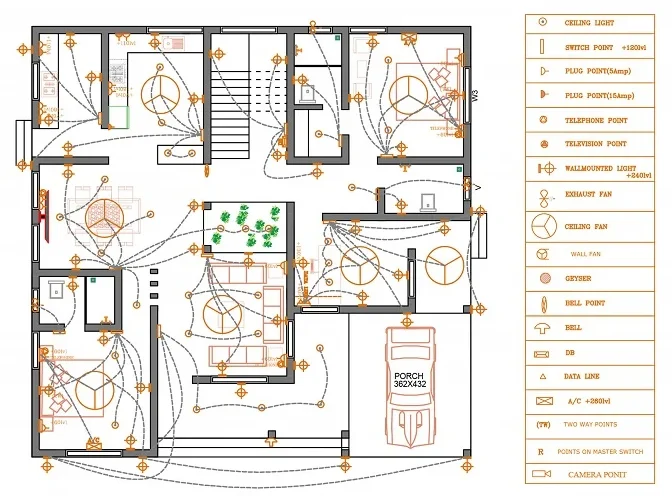
Reference Plumbing Drawing –
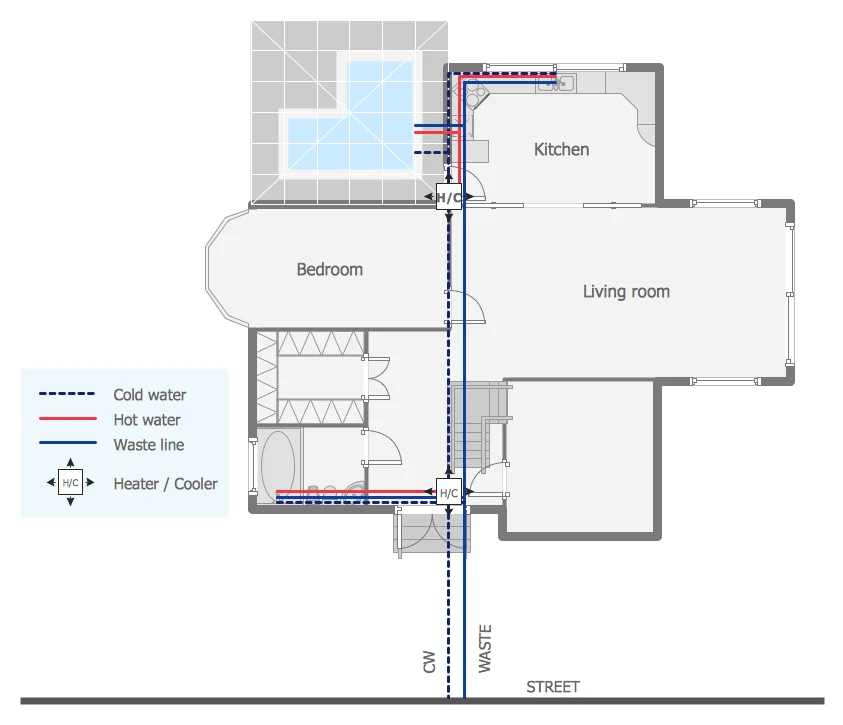
- Experts like architects, civil engineers, and interior designers can help you create complete house planning that meets your needs and goals.
3. Budget Estimation
- The next step in house construction is budget estimation. This means setting aside money for the project. Once you have a house plan design, you can give it to a building estimator.
- The estimator will figure out how much materials, machinery, and labor will cost to finish the job of your house construction process.
- Based on this, the estimator will provide an approximate budget that you will require to complete the home construction.
- If, at the time of house planning, your financial capability is limited, you can proceed with a loan from a financial institution. Taking care of such things in advance will ensure there are no cash crunch situations. For example –
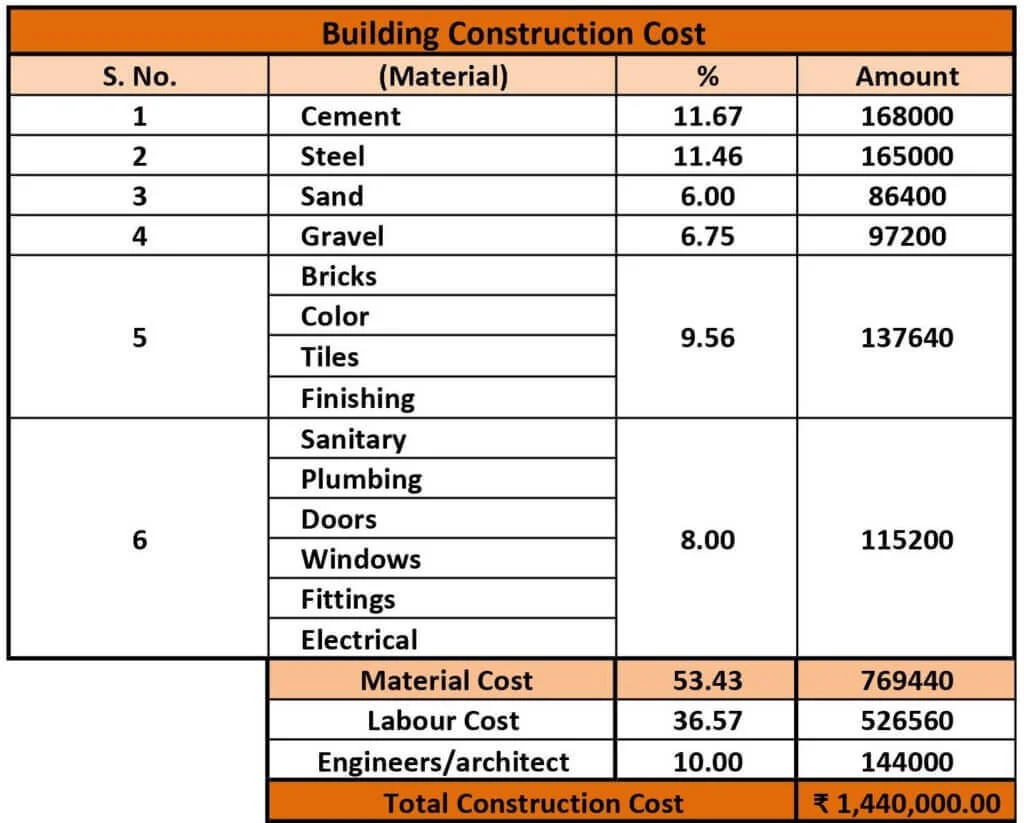
4. Documentation
- Many buildings are demolished daily due to inadequate documentation and evidence of ownership. So, the earlier you start designing a house plan, make certain changes you have got from certain authorities.
- In the construction documentation, the registration files of your house plan design have to be up to date to keep you away from any legal hassles in the
- Get a certificate showing the acquisition of the land, signed by the legal authorities and the transferrers for your house planning.
- It is also essential to ensure that you have all the necessary documents, such as structural reports, architectural drawings, certificates of undertaking, etc.
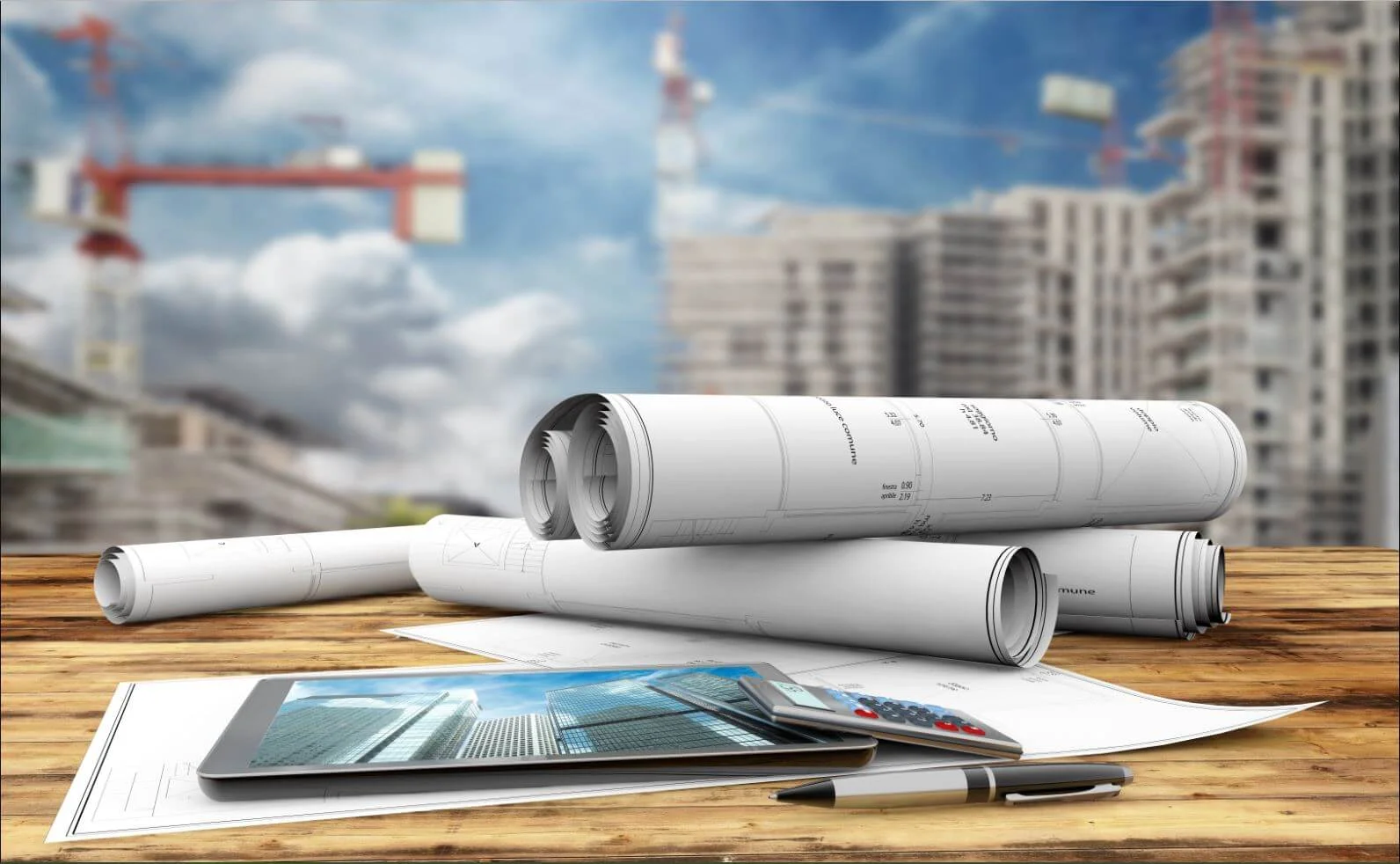
5. Approval from the Government
- If planning permission has been obtained from your local authority, your house construction process will start. Also, you need to know that there are some permissions required before you occupy your house.
- To start with the construction and complete it, you have to be ready with the compilation of some important construction documentation in one file that includes the main 7 approvals and certificates. They are –

- Land Title Certificate
- Land ClearanceCertificate
- Zonal Clearance Certificate
- Building Approval Certificate
- Completion Certificate
- Services and Utilities Installation Certificate
- Occupancy Certificate
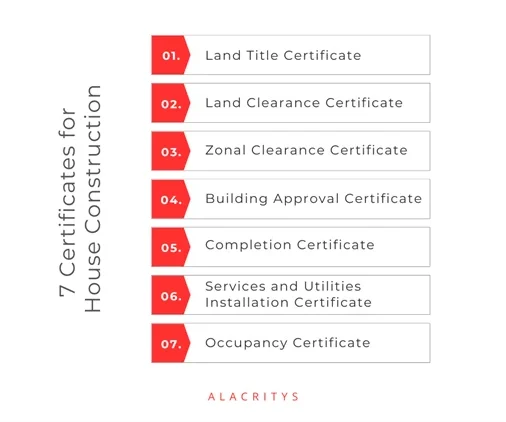
For each building to be constructed and completed, the owner must receive the above permits and sanctions from all relevant authorities.
Any building construction which is built without any approvals will invite penalties in the form of fines and even prosecution.
The House Construction Phase
Once you complete the beginning phase of the construction documentation, we will now take you through the step-by-step process of the house-building phase. There are 12 steps in this phase, we detail them for you below.
1. Site Clearance, Soil Testing, and Securing Your Materials
- The first step in the house construction process should be to remove unwanted objects like trees, plants, and debris from the site. They may obstruct the construction progress.
- To get the job done, you can contact professionals who operate bulldozers or lawnmowers.
- Soil investigation should be done by inspecting, testing, probing, and boring techniques.
- Test pits are dug to a depth that allows for visual inspection of the soil.
- Probing involves driving a steel bar into the ground until it reaches a hard surface.
- Boring involves drilling into the ground and collecting soil samples.
- A temporary tin shed room can be built on-site to protect your materials till the completion of the construction of the walls of the ground floor.
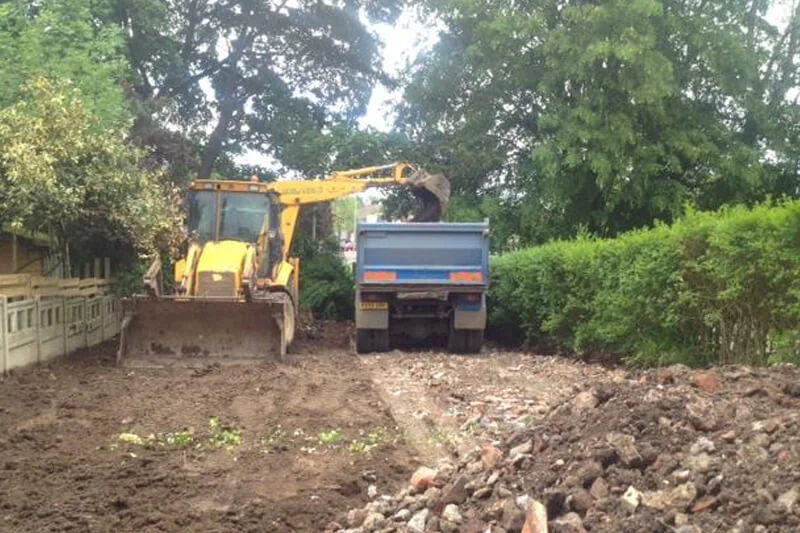
2. Provision of Electricity and Water Supply
- Sources of water and electricity must be provided in reasonable quantity in building construction. Without these essential utilities, home construction work would be severely hindered, and the workforce’s well-being could be compromised.
- The contractor must make all connections ready and provide necessary extensions, and he should be able to remove all connections and extensions after completion of the work while constructing a house.
3. Marking of Centerline and Site Excavation
- Marking the centerline accurately is important for maintaining proper alignment and dimensions throughout the construction of the building and following the exact dimensions that you got in your house plan design. It helps to avoid costly errors that come during different construction stages.
- Calling the expert with the required team for marking the centerline at the site is a good idea to proceed further without any stress.
- It serves as the reference point for the house construction process and also helps to maintain proper alignments on the site.
- The next step will be the excavation of the site before you start with the foundation work given in your house planning. Would you be appointing a professional for the centerline marking?
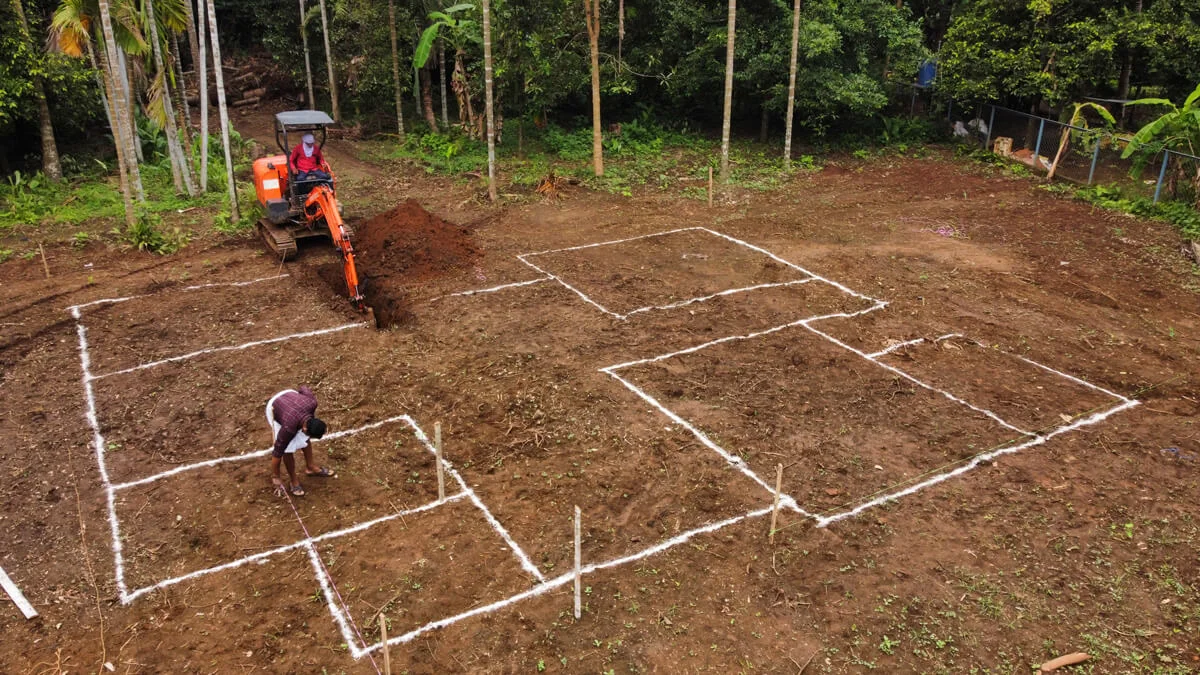
4. Laying the Foundation
- The construction of foundation is the base of the building where it is placed on the ground. In other words, it is the invisible structure of every building or house. If the foundation is weak, it cannot bare the weight of the house, leading to collapse.
- The process of laying a foundation involves several key steps, such as Site Preparation, Excavation, Footing, Formwork, Reinforcement, Customised concrete making on-site/ Ready Mixed Concrete pouring, Curing and Setting, Backfilling, Waterproofing, and Drainage.

5. Plumbing, Electrical, and Gas line
- While doing the construction of the foundation, you need to be ready with decisions with your society committee and your architect about where to take the main drainage line and gas pipeline.
- Your house construction contractor will need to dig and pull the required gas line, plumbing lines, and electrical lines as per the house plan design given by your architect and by following your society’s norms.

6. Plinth Beam and Slab
- It is a reinforced concrete beam that is placed on the ground level on the completion of the construction of the foundation. This beam is added to make it stronger and prevent damage like cracks. This also helps the foundation withstand earthquakes.
- The plinth beam and slab play an important role. The main functions of the plinth beam are load distribution, protection against dampness, and leveling the ground.
- Electrical conduit pipework needs to be added at the time of construction of the foundation before filling the reinforcement structure of the plinth beam.
- Same way, drain waste, and vent pipeline work are to be completed before filling the reinforcement of the plinth beam. This is to connect the plumbing supply line for the bathrooms and the septic tank.
- At the time of home construction, the septic tank with a depth of around 5 ft. to 8 ft. and underground water tank construction in RCC with a depth of 10 ft. to 15 ft. is to be completed with the level of the plinth beam slab.
- The plinth beam slab should be raised by a minimum of 3 ft. above the road level.
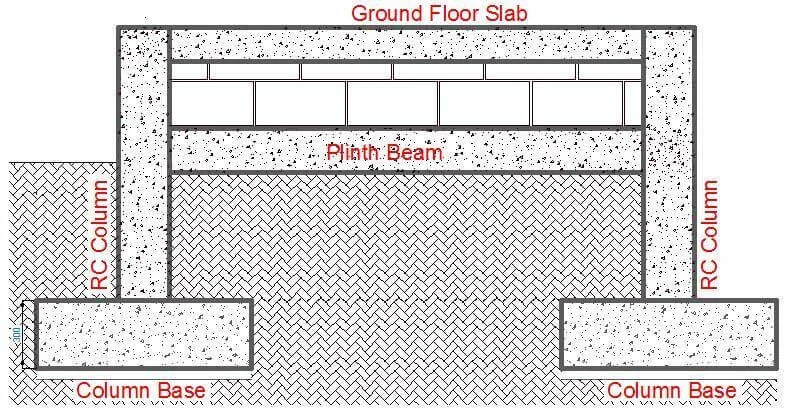
7. Superstructure – Construction of Columns
- The construction of columns is a critical phase in the house construction of the superstructure. Columns are vertical supporters which transfer the load coming from floors and roofs to the foundation.
- Column layout and positioning are done using the architectural house design plan, marking the locations of the columns on the foundation make it easy.
- Skilled labours are needed for the construction of columns.
- You should make your contractor aware that you want the equipment and tools the right ones to avoid flaws that come during the installation of the columns.
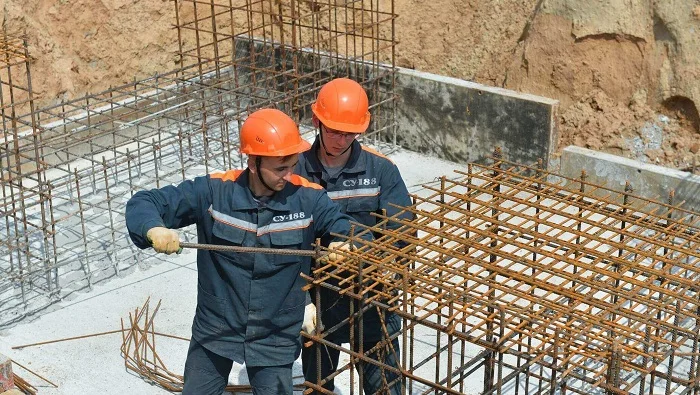
8. Preparation of All Floor Slabs and Roofing
- Slabs form the floors of buildings and provide a surface for various activities. Construction of the slab is essential for the structural integrity and durability of the building.
- The roofing slab is one of the important parts of the construction components. This requires waterproofing to prevent any leakage inside the house. After waterproofing work, tiling is to be done to bring safety that guards the slab as well as brings aesthetics to the house building.
- Using quality materials and the work of skilled labours during the preparation of the slab will be successfully constructed.
- Plumbing and electrical wiring also need to be done before the filling of the slab. These systems are important for providing water supply, drainage, electricity, and other utilities to the various parts of the structure.
- Once the plumbing and electrical work gets complete, you can start filling and leveling the slab above the construction of columns on the ground floor.
- You need to be cautious of following the above steps for the second slab as well if you have a ground plus two-storied system. Your house plan design will help you better to get you through the process.
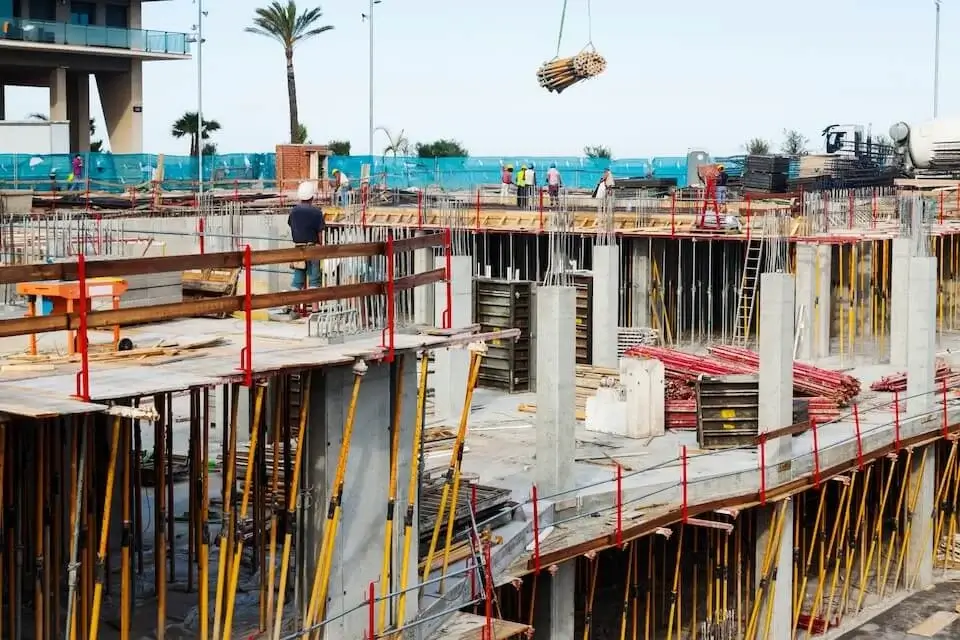
9. Brickwork, Chajjas, and Plastering for All Floors
- Brickwork provides structural support to the walls of the structures.
- Surface Preparation
- Mortar Preparation
- Laying the first course
- Checking for level and plumb
- Adding Mortar Joints
- Cutting Bricks
- Curing and Protection
- Pointing and FinishingHow is brickwork typically installed in stages?
- Chajjas act as projecting eave or canopy-like structure that extends from the external wall of a house, providing shade and protection from rain and sun.
- Chajjas are particularly suited for Indian climates, they enhance the beauty of house elevation design by giving an aesthetic look. How chajjas and lintels will you add to your project?
- The steps used for plastering are as below:
- Surface Preparation: Before applying the plaster, the brickwork surface needs to be properly cleaned and prepared.
- Application of Bonding Agent: To ensure a strong bond between the plaster and the brick surface, a bonding agent or primer is applied.
- Mixing the Plaster: The plaster mix is prepared by mixing cement, sand, and water in the appropriate proportions.
- Applying the Plaster: The plaster is applied to the brick surface using a trowel. It is spread evenly across the wall, starting from the bottom and working upwards.
- Smoothing and leveling are carried forward with giving texture and designs, curing is done and lastly, the final finish is done.
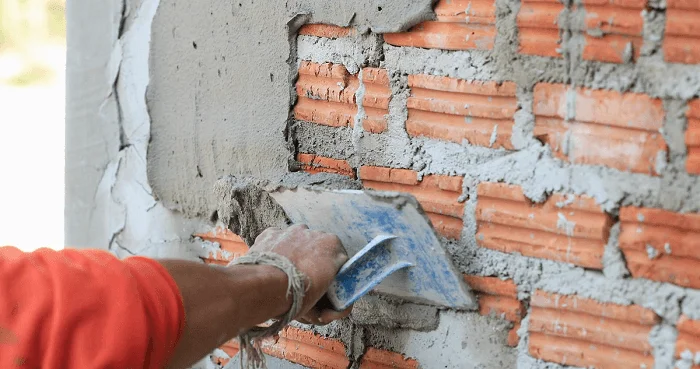
10. Lintel and Sill Level Framework for All Floors
The lintel and sill level framework during house construction plays an important role in supporting doors and windows. Proper installation must be done by skilled labours regarding building codes and standards.
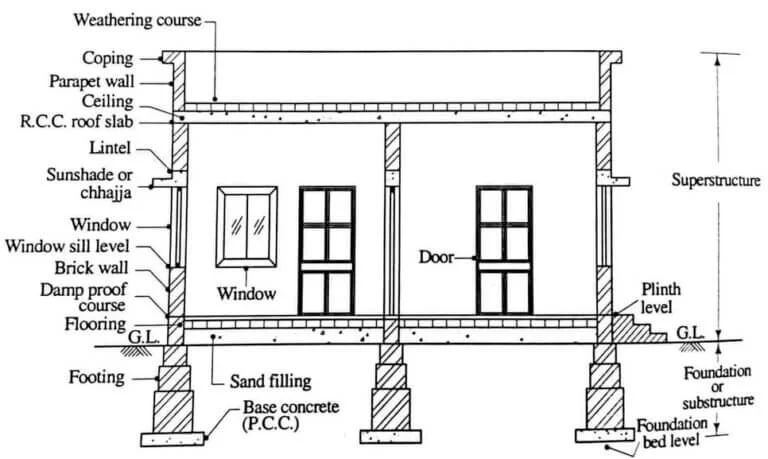
The lintel is typically made of reinforced concrete, steel, or precast concrete. It is placed horizontally above the opening.

The sill should fit within the opening and have enough overhang to shed water away from the wall.
Placing the sill at the bottom of the opening ensures that its level is centered. The ends of the sill should rest on the brickwork or the supporting masonry walls on either side. Fix it by applying proper fixing material such as mortar adhesive.

11. Exterior Design
Front elevation exterior design requires thoughtful planning, creativity, and attention to detail. Building identity comes with this facade design.
While designing front elevation in home construction which points we should take into consideration:
- Architectural Common styles include modern, contemporary, traditional, colonial, Victorian, Mediterranean, and more.
- Plan the arrangement of elements on the facade, such as walls, windows, doors, and balconies.
- Select the appropriate materials, and chemical-based protection for the material for the front elevation.
- Lighting effects are considered in designing a house plan. Outdoor lighting to highlight architectural features, create ambiance, and enhance safety during the evening.
- Explore opportunities for sustainability, such as green walls, solar shading, rainwater harvesting, or energy-efficient windows, to enhance the building’s environmental performance.
- In-Color Palette Choose a harmonious colour scheme that complements the architectural style and creates a good ambiance.
- Entrance and Foyer – The main entrance is a focal point of the front elevation. Consider an entrance design with an attractive doorway and a welcoming foyer.
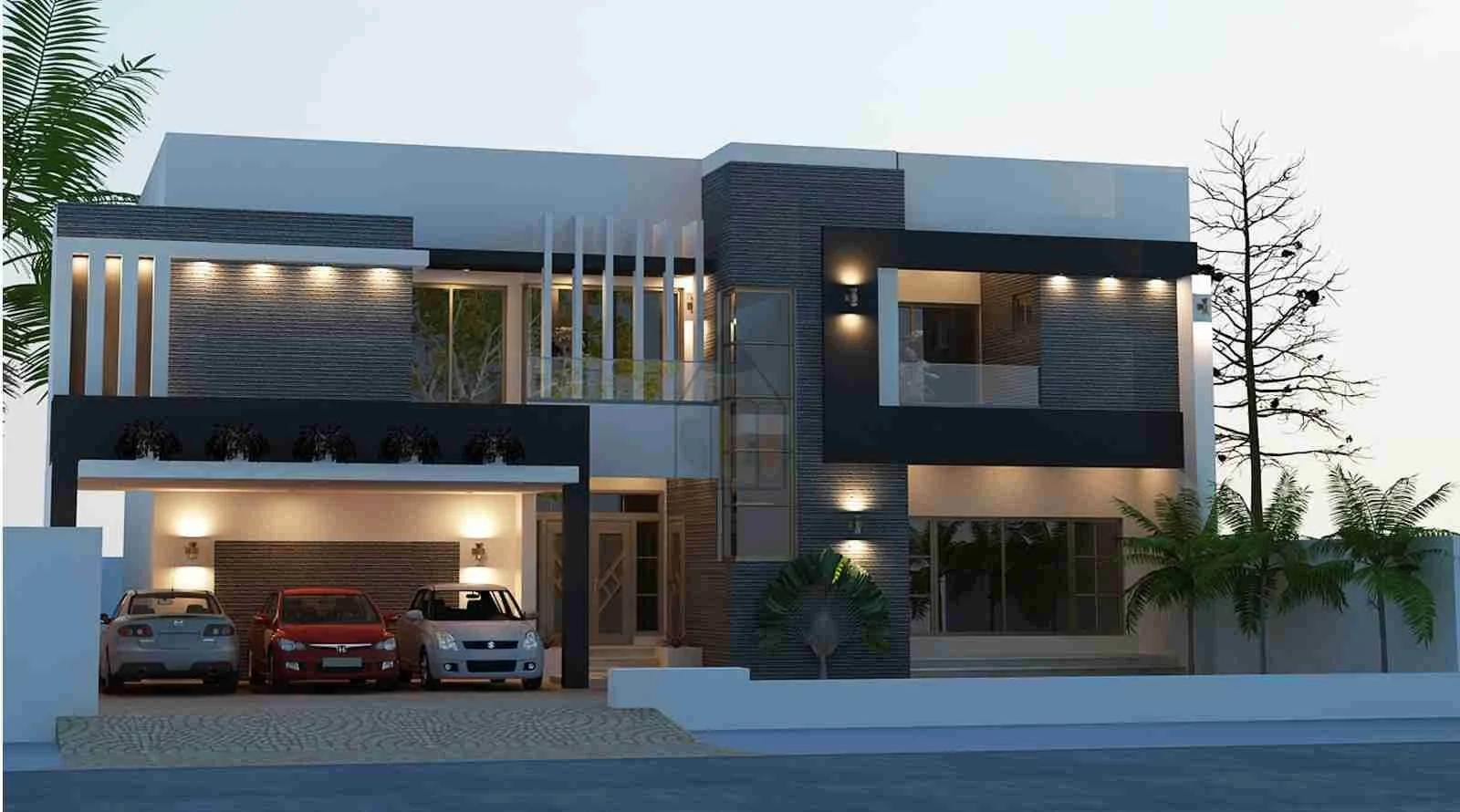
12. Interior Design
Interior designing during house plan design makes spaces more beautiful. You can use space in a good manner. More creativity and art make the ambiance more worthy.
- Flooring: When it comes to flooring, you can choose from several options like Italian marble, vitrified tiles, porcelain tiles, ceramic tiles, wood tiles, wooden flooring, and The choice depends on your budget and preferences.
- Door Fitting: A well-fitted door not only enhances the aesthetics of the living space but also ensures security, energy efficiency, and smooth operation. It requires meticulous planning, accurate measurements, and attention to detail. Consult a Professional Interior Designer if you need assistance in making the right choice.
- Bathroom Tiling and Fixtures: Choosing the right bathroom tiles and bathroom fixtures at the time of designing a house plan can significantly influence the look and feel of your bathroom. A popular bathroom flooring option is ceramic tile. Being water- and stain-resistant, it won’t absorb bacteria or odors.

- Kitchen Countertop: Depending on the space and the layout of your kitchen, you should choose the right shape for your Choosing the right kitchen countertop requires careful consideration of various factors such as material, budget, lifestyle, and maintenance requirements.
- Painting: Interior painting involves applying paint to the walls, ceilings, and other surfaces inside a building to enhance its aesthetic appeal, protect the surfaces, and create a desired atmosphere. When selecting a wall paint color for your home interior, you can check the color catalog provided by Asian Paints, which includes over 2200 different shades.
- Light Fittings and Fans: After painting, you can proceed to install various light fixtures such as panel lights, profile lights, and fans.
Conclusion
So, constructing a house is so much more than just buying a piece of land. So many ideas and hands come together in building one home.
Every stage of building construction, from the early planning to the complex foundation work every step requires careful consideration and attention to detail. Throughout this process, the collaboration between architects, engineers, contractors, and skilled labours is the key.
Even though the house construction process is over, the story of the house is just beginning, and it will become an integral part of your life for many years to come.
So, Alacritys would like to ask you –
- What will the size of your house be and what are your requirements?
- Will you be keeping your service drawings ready?
- Will you be making one shade room ready to secure your materials?
- How will you be taking electricity and water supply for your project?
Tags
Meet your guides
Alacritys Twinkle (Content Writer)
visit authorRecent Posts
"Discover Design Adventures"
Explore creativity and knowledge across diverse design verticals. continue getting the latest updates, expert reviews, advice and deals directly to your inbox.
- Talk To An Expert
- Blog search
- web stories
- trending blogs

"Discover Design Adventures"
Explore Creativity and Knowledge Across Diverse Design Verticals.
Continue getting the latest updates, expert reviews, advice and deals directly to your inbox.
- Talk To An Expert



